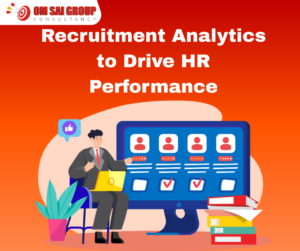Recruitment analytics

Recruitment Analytics: The Key to Smarter Hiring Decisions Introduction With every business decision in this day and age driven by data, recruiting should be no different. Recruitment analytics has become a game-changing way of hiring that assists HR professionals in transcending guesswork and making informed decisions based on evidence. It entails gathering, measuring, and analyzing data from the recruitment process to detect trends, assess performance, and refine subsequent recruitment practices. Om Sai Group Consultancy, a trusted leader in talent solutions, advocates for integrating data-driven recruitment into every stage of the hiring funnel. From sourcing candidates to onboarding, analytics now shape how top companies build high-performing teams. Recruitment analytics In this blog, we’ll explore the key aspects of recruitment analytics, including its benefits, use cases, and the top metrics every organization should monitor to optimize hiring outcomes. How Recruitment Analytics is Transforming Talent Acquisition Recruitment analytics is changing the way talent acquisition is done by empowering businesses to make better, quicker, and more effective hiring decisions. It makes all the steps involved in the recruitment process quantifiable data—from the sources of candidates to their durations. Businesses that adopt talent analytics can optimize strategies in real-time, lower recruitment expenditures, and construct better, more diverse teams. For instance, through an understanding of sourcing effectiveness, HR is able to spend budgets more efficiently and enhance time to hire. Consequently, the recruitment process is more proactive and strategic than reactive and transactional. Placement services for stenographers for employers 1. Time to Hire Optimization Time to Hire captures the number of days between the application of a candidate and acceptance of a job offer. Why This Matters:





























